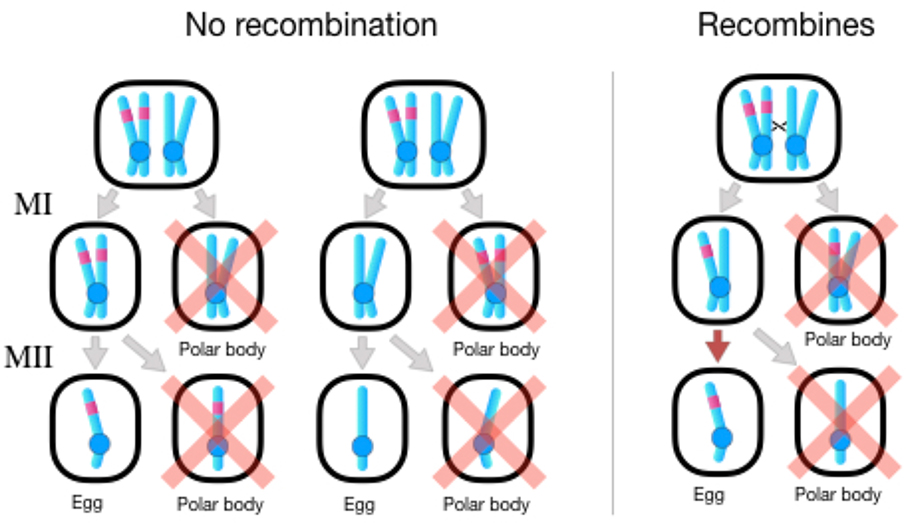Figure 4:
Meiotic drive during Meiosis II in oogenesis favors the spread of unlinked modifiers that decrease recombination or coupled modifiers that increase recombination in females. Left: A Meiosis II drive allele has no effect without recombination. Whether or not the drive allele is transmitted to the egg is solely determined the outcome of Meiosis I, which is unaffected by the drive allele. As a result, there is an equal chance that the chromatids containing the allele are both transmitted to Meiosis Il (far left) or that they are deposited in inviable polar bodies (middle, denoted by pink “X”). Right: When there is a crossover between the drive allele and its centromere, the product of Meiosis I will always compose one chromatid with the drive allele and one without. Meiotic drive will then favor transmission of the drive allele to the egg during Meiosis II.

